Now Selling on eBayUpdate: I no longer sell items on Etsy or eBay but feel free to check out my blog posts on gardening, wreaths, maple syrup, chickens and ducks, and more!
Announcement: We are now selling select items on eBay in addition to Etsy. Items such as pine cones and dried flowers which we have in excess are now available on eBay for customers who prefer the eBay platform. Please visit our shop at the link below. Thanks!
0 Comments
Common Garden Pests (Updated in 2024)There are a ton of pests that can affect your garden. I will touch on a few that have been the biggest problems for me both currently and in the past. This year I have been lucky that we had very few bug problems. However, this is most likely because this was our first year gardening in this spot. It sometimes takes pests a year or two to find your garden. My biggest problem this year has been slugs. This may be because we had an excessive amount of rain in the early part of the growing season. Other pests that I have had problems with include potato beetles, flea beetles, squash bugs, cucumber beetles, wireworms, voles, and mice. Putting down lots of mulch or cardboard provides great benefits in weed control and retaining moisture however I have found that this increases the slug and mouse population as both tend to live under the mulch and cardboard. However, I believe the advantages of mulching outweigh any disadvantages. We set traps for the mice but insect pests can be harder to control, particularly if you try to avoid chemical control methods. I have detailed some of our biggest insect pest problems below and possible methods of control. 1. SlugsIt can be tough to know if you have a slug problem as they are not generally out during the day so they can be hard to see. However, if you find you have lots of holes in your plants particularly cabbage, broccoli, and cauliflower then you may have the slug problem. I have also found slugs on my beans, corn, peppers, and other vegetables. To determine if you have a slug problem check out your plants at night or in the early morning particularly when it is humid out. I found hundreds of slugs coating my plants this year when I went out at night. There are many methods to get rid of slugs. One of the more popular ones is beer or yeast traps. I have tried mixing yeast with some flour and water however this did not attract any slugs. But different slugs may be attracted to different baits, including the commercially available ones. I plan on trying straight beer this week to see if that is more effective and will update this post after. The take home message is if you are using a bait try different ones until you find one that works. Other solutions include chemical control methods such as pesticides or slug pellets. However, many animals such as birds and frogs eat slugs so if you decide to go the chemical route ensure that the pesticide will not affect the animals that eat the chemically treated slugs. My favorite method, which is more labor intensive, includes handpicking the slugs from the plants or from underneath cardboard or wooden boards that you lay down around your plants. Wear gloves if you don’t like the slime! If you want to pick them directly from the plants you must go at night or early morning when the slugs are out. If you mulch or lay down cardboard or wooden boards around your plants you can simply lift up these boards and cardboard during the day to look for slugs. I have collected hundreds of them by picking them directly from the plants or from the cardboard I lay down to mulch. A bonus for us is that we use the slugs as bait when fishing in our pond! Slugs hiding under cardboard mulch during the day.Damage to cabbage caused by slugs2. Potato BeetlesThe Colorado potato beetle is a huge pest for potatoes and other related plants. As this was our first-year gardening in this spot we had very few pests including potato beetles however one day I found a few adult beetles on our potato plants. Unfortunately, I did not get a picture of the potato beetles but a simple internet search should show a round, striped beetle that is fairly distinctive. I simply hand-picked the beetles I saw from the plants and thought I had won the battle! However, several weeks later I noticed our plants were getting devoured by the potato beetle larva (see picture below). Likely the adult beetles had laid eggs resulting in the larva several weeks later. The potato beetle larva are rather ugly pinkish bugs that can quickly destroy your plants. Again, I simply hand-picked the larva but they did do significant damage to some of the plants before I noticed them. You can use chemical pesticides against potato beetles but if possible, I prefer to avoid chemicals. Hand-picking potato beetles is possible as long as your number of plants are small and you keep an eye on your plants throughout the season. I have also read that due to widespread use of pesticides many potato beetles have become resistant to pesticides (University of Minnesota extension), another reason not to use them. 2024 Update: Our potato beetles eventually got so bad we stopped trying to grow potatoes. However, for the 2023 growing season we decided to try again. This time I checked the plants every day for the beetles/larvae and under the leaves for the orange clumps of eggs. This took a lot of time but we were finally rewarded with a huge crop of potatoes. Now I just need to get those wireworms under control! Potato beetle larvae eating a potato plant3. Flea BeetlesI had minimal issues with flea beetles this year however I have had significant issues with them in the past and I am sure I will see them in my garden in the near future. Flea beetles are tiny black beetles that jump (like fleas!) when you get near them. These beetles can be found on a wide range of plants but I have had the most trouble with them in leaf lettuce mixes, radishes, turnips, spinach, and other similar vegetables. Particularly arugula, mustard greens, and radishes tend to be devoured by them. If you find your plants have very tiny holes in them you may have a flea beetle problem. One of the most effective methods is to cover your plants early with row cover. Row cover is a cloth that allows light through but has tiny holes that do not allow the bugs to pass through it. However, I find row cover to be a pain because you have to cover your crops as soon as the plants emerge, before the bugs arrive, and remove it to harvest or weed. However, flea beetles are most active and do the most damage in spring, so once your plants are big enough you can remove the row cover and a little damage by the beetles generally will not affect your harvest. Another method I have tried with variable success is to plant another plant nearby such as mustard greens, which flea beetles love, to lure them away from your desired crop. However, I find that although this works, you are helping the population to grow more by feeding them extensively. You can always choose to treat the bait plant with insecticide to kill the flea beetles. These bugs are so small and so fast, this is one case where hand-picking them is not an option. A third, and I think best option, is to do much of your cold weather crop planting in the fall rather than the spring (see my earlier post on fall gardening) as flea beetles are mostly active in the spring. Therefore, I have many fewer issues with these beetles in mid to late summer and fall. 4. Cucumber BeetlesThere are two types of cucumber beetles. I have mostly had trouble with the striped cucumber beetle but a spotted one also exists. Both are yellow bugs with black stripes or black spots. These beetles eat cucumber plants but also squash, melons, and other related plants. The striped beetles overwinter and emerge in early summer and can completely destroy young plants. The spotted beetles do not overwinter and so they tend to arrive in later summer and cause fewer problems. I did not have problems with either beetle population this year, likely because my garden is new and they haven’t found it yet. But, in the past, particularly in community gardens, I have had to replant my cucumbers and squash because the first round was completely eaten by these bugs. In addition to eating the leaves they may also eat the flowers and fruit. The striped beetles will also transmit bacterial wilt disease to your plants so it is important to monitor your plants for any infestations. The best way to control these beetles is with an insecticide but if possible use a “natural” insecticide that is less likely to kill good bugs such as native ladybugs that feed on aphids. Neem oil is a popular “natural” insecticide although in general it will not be as effective as a non-plant based one. Another alternative is to plant cucumbers or squash plants early in the season a couple weeks prior to planting your actual crop. Also plant these a little distance away from where you plan to plant your actual crop. These early plants will attract any beetles to them. Then hand-pick or treat these plants with insecticide to kill the beetles. Also, never apply any insecticide when your plants are flowering as this will also kill any honeybees that are attracted to your flowering plants. For more information on cucumber beetles and other pests, I have found that the University of Minnesota extension has a lot of good resources. 5. Wireworms I Wireworms, the larvae of the click beetle, have become a big problem for me. They live in the soil and eat roots, this means they can affect any plant but are particularly troublsome for root vegetables, like radish, turnips, potatoes, etc. I also have a problem with wireworms eating the roots of my cold crops like cabbage, broccoi, and cauliflower. If I find a plant that has suddenly wilted in my garden I pull it up and usually there are multiple wireworms eating the roots. I tried using beneficial nematodes which are supposed to help destroy the wireworms and this seemed like it was effective the first year I used it but upon subsequent years I did not notice a benefit and my wireworm problem became worse than ever (I dug over 100 of them out of my garlic raised bed). Another method of control is to trap the wireworms using a potato. So last year (2023) I made about a dozen potato traps by cutting potatos up into approximately 2 inch pieces and piercing them with toothpicks or wooden skewers (I used the ones for cooking). I prefer the skewers because they are bigger and more sturdy. I then tied a piece of marking tape to the end of the skewer so they were easier to find in the garden. You dig a small hole just a couple inches deep and put the potato in the ground with the tagged end of the skewer poking out. Every few days I would dig them up and check for wireworms eating the potato. I collected anywhere from a few to several dozen wireworms in a day. I am hoping that if I continue to use wireworm traps in my garden I can slowly reduce their population. I find that these traps are much easier to use in my raised bed because they are easier to see versus in my main garden where the foilage quickly covers the traps making them less visible. ConclusionThere are obviously many more insects that cause problems in gardens as well as bacterial and viral diseases. In the future I hope to expand more on these topics. If you have any questions or comments please feel free to contact me or comment below. Fall GardeningFall gardening is a great way to extend the growing season and eat fresh vegetables into the fall and sometimes even the winter. Fall gardening also has several other advantages over the traditional spring/summer garden. One big advantage is that there are significantly fewer insect pests around to destroy your crops. Another advantage is you don't need to worry about summer coming on too quickly and your plants bolting too soon. For the northern garden, some of the best crops to plant for a fall garden include lettuce, broccoli, cabbage, spinach, mustard greens, kale, chard, peas, cauliflower, turnips, collards, carrots, and more. Basically, anything you would plant in the spring can be planted again in the fall. The following are a few tips for a successful fall garden. Tip #1: Time your Planting!Timing when to plant your fall garden is probably the most important factor. To determine the proper timing, you need two pieces of information. First, you need to know the average first frost date for your area. This is the date in the fall where on average (generally 50% of the time) the first hard or killing frost occurs. Remember, this is just an average so it is possible that the first frost may actually occur a week or two or even more in either direction. To determine your average first frost date, you can use a website such as the one by the National Climatic Data Center which gives the average frost dates for both spring and fall at various probabilities (I generally use the 50% one). There are plenty of other websites that give similar information but each one may vary slightly so you may want to check a few sites to get reliable date from multiple sources. The second piece of information you need is the average number of days to harvest for each vegetable you plant. This generally can be found on your packet of seeds. Different varieties of the same vegetable can vary greatly so you want to make sure you are using the dates from your specific variety not generic information for a general type of vegetable. In general, however, spinach, lettuce, and other greens grow quickly and will require fewer days to harvest and so can be planted in late summer or even early fall depending on your zone. Other vegetables that take longer to mature such as broccoli or cauliflower you will need to plant sooner, such as mid to late summer, again, depending on your zone. For example, if your vegetable takes 50 days to harvest and your average first frost date is October 1st then you would want to plant your seeds around August 12th which is 50 days before the average last frost date. Spinach and mustard greens grow quickly and can be planted later or multiple plantings staggered throughout late summer and early fall.Tip #2: Water your Seeds!Most years you will need to water more when planting a fall garden than for a summer garden. In general, we receive more rain in the spring and early summer so nature does a great job watering for us during those months. However, in our zone most of our planting for a fall garden needs to be done in mid-July to late-August. This is generally a drier time for much of the Northeast and Midwest so in order to receive optimal germination I usually water every 1-2 days until the seeds germinate and a good root system is established. Chinese cabbage and traditional cabbage grow much better in the fall when insects and slugs are less active.Tip #3: Cover your Plants!If your first frost comes earlier than expected there are ways to protect your plants so you do not lose your crops. The best way is to cover your plants to provide a few degrees of protection. The easiest way is to cover larger areas with a tarp or plastic of some kind, just do not let it touch the plants. You can also buy large frolls of cloth frost cover that is specifically designed to provide cold weather protection for plants. Frost covers come in a variety of thicknesses or you can double up for increased protection. Remember, however, that the thicker the cover the less light is allowed through. For individual plants, you can cover them with a milk jug with the top or bottom cut off or a pot or bucket. This can be time consuming depending on the size of your garden. Alternatively, you can plant your veggies in a greenhouse or cold frame. This requires more money upfront to build a greenhouse or cold frame. Most people are familiar with a greenhouse however a cheaper and easier version is to build a cold frame. This involves simply adding a clear “lid” to the top of a raised bed. This is generally glass or plastic. Many people recycle old windows and fit them to the top of a raised bed. The key with a cold frame is that they need to be lifted up to vent during the warm days and then closed at night to protect the plants from frost. Cold frames and greenhouses can significantly lengthen your growing season particularly in northern climates. Collards, peas, and broccoli are all great options for a fall garden. |
Details
AuthorIn 2016, my family and I moved from the New York City area to small town Wisconsin. Our move, this website and blog (and our previous Etsy store) is the result of our desire over the past several years to simplify our lives, increase our quality of life, reconnect with nature, and enjoy a more self-sufficient life. I grew up as a country kid in central Pennsylvania working on my grandfather's fruit farm and as a corn "de-tassler" at a local seed farm. My background is in biology where my love of nature originated. I am a former research scientist and professor and have now transitioned to a part-time stay-at-home mom, self-employed tutor, and small business owner. Thank you for taking the time to check out my site. Archives
July 2024
Categories
All
|


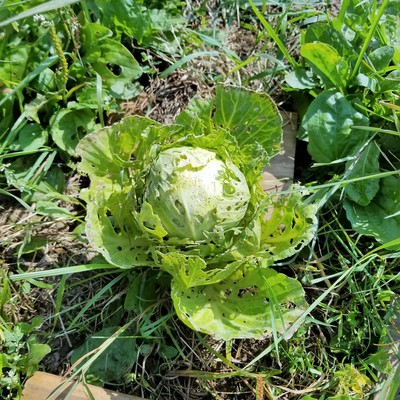
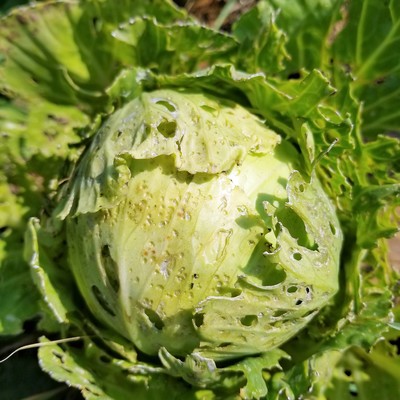

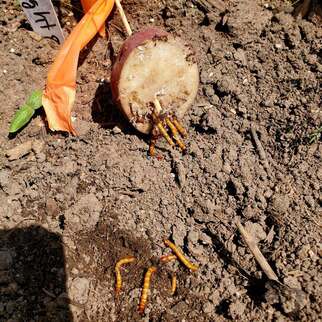

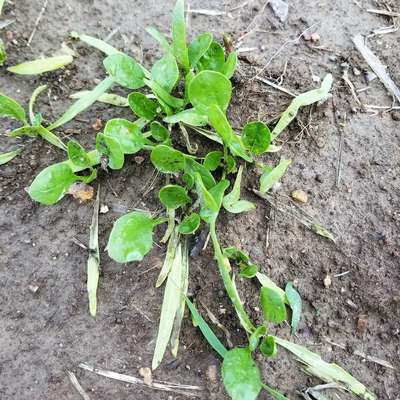


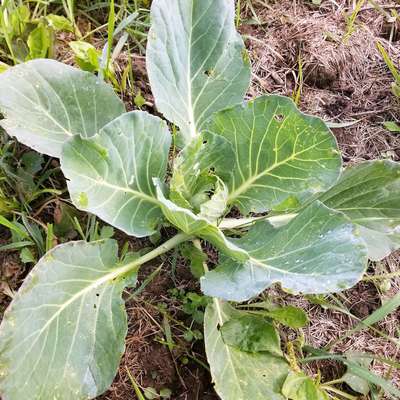
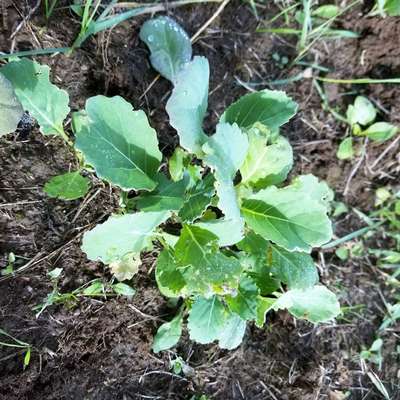


 RSS Feed
RSS Feed